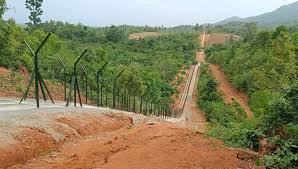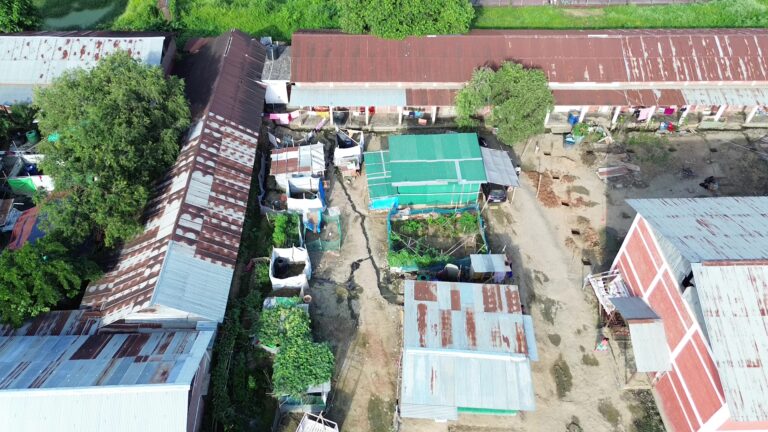Kuki Leaders Demand Rethink on Indo-Myanmar Border Fencing
Summary
The Kuki Inpi and Kuki Chiefs Association recently urged authorities to reconsider the proposed border fencing along the Indo-Myanmar border. They argue that the fencing threatens the cultural and historical rights of indigenous communities, cutting them off from family and cultural ties across the border. Citing the Free Movement Regime, which has allowed cross-border movement for trade, tradition, and familial ties, Kuki leaders warn that implementing fencing without consultation disrespects their heritage.
Full Article
Introduction: The Debate Over Indo-Myanmar Border Fencing
Border security in India is essential, but in regions like Manipur, it’s more than a matter of national safety. For many, this land isn’t just a boundary line; it represents centuries of shared traditions, family bonds, and cultural exchanges. When authorities recently proposed constructing fencing along the Indo-Myanmar border, Kuki leaders in Manipur expressed deep concerns. Their stance? That fencing would sever an important cultural and historical connection, altering their way of life permanently.
Why the Kuki Community is Opposing Border Fencing
The Kuki community is deeply concerned that the proposed fence will cut off traditional pathways essential for maintaining social and familial ties with kin in Myanmar. Historically, communities across Manipur have used the Indo-Myanmar border as a permeable line, with both sides moving freely to visit family, attend cultural events, and trade goods essential for their livelihoods. Fencing would limit this mobility, impacting these communities’ way of life.
The Free Movement Regime (FMR): A Vital Link Across Borders
The Free Movement Regime (FMR) is a policy that allows indigenous people to cross the Indo-Myanmar border without stringent regulations, provided they stay within a 16-kilometer radius. This regime, more than just a policy, serves as a cultural bridge, enabling communities to maintain familial and cultural bonds across borders. For the Kuki people, it has long supported a way of life where connections across the border are a daily norm, allowing them to engage in traditional practices, communal ceremonies, and vital trade.
Cultural and Historical Ties Across Borders
The proposed border fence jeopardizes more than physical movement; it risks erasing centuries of shared traditions. The Kukis, like other indigenous groups, have cultural roots that extend beyond political lines. Weddings, festivals, traditional ceremonies, and even funerals often require the presence of relatives from both sides of the border. The border, in their view, shouldn’t sever these ties but should remain open to preserve their cultural legacy.
Concerns Over Displacement and Identity
For the Kuki people, the border holds symbolic importance. But more than that, it provides access to lands they’ve cultivated for generations. Fencing would disrupt access to resources and land, risking the displacement of entire communities whose lives revolve around farming, gathering resources, and engaging in trade. Furthermore, these border communities face the potential erosion of their identities, as forced separation from relatives weakens communal bonds and diminishes cultural practices unique to them.
The Argument for Consultation and Respect
One of the Kuki leaders’ strongest points is the lack of proper consultation in proposing the fencing. As they argue, any project impacting indigenous rights must involve direct dialogue with the affected communities. Without understanding these cultural and historical connections, authorities risk implementing measures that alienate and anger the Kuki people. Their demand isn’t to dismiss security concerns but to ensure that any policies respect their heritage and involve input from those who will be most affected.
Security Considerations and Community Safety
While security along the Indo-Myanmar border is crucial, some Kuki leaders argue that more nuanced solutions should be explored. There’s no denying that certain parts of the border experience heightened security concerns. However, fencing is a sweeping measure that may be excessive in areas with minimal risk. Kuki leaders propose enhanced surveillance, community-led security initiatives, and increased checkpoints to address safety concerns without the blanket application of a physical barrier.
How the Proposal Impacts Local Economy
Trade across the Indo-Myanmar border is an essential part of the local economy. Indigenous people often depend on this cross-border trade to earn a living, exchanging goods like textiles, handicrafts, and agricultural products. Fencing would disrupt these exchanges, significantly impacting families who rely on the income from cross-border trade. For these communities, economic ties are as important as familial ones, with the fencing proposal threatening both.
Regional Comparison: Border Management in Other States
Manipur isn’t the only state sharing a border with Myanmar, yet it appears to be the only one facing this intense fencing proposal. Mizoram, Nagaland, and Arunachal Pradesh have also faced security issues along the border, but authorities in these states have handled the situation differently. The Kuki leaders argue that the government should recognize these regional differences and consider a more tailored approach to border management.
Possible Solutions: Finding a Middle Ground
Rather than outright opposition, the Kuki leaders are calling for a re-evaluation of the fencing proposal. They suggest alternatives like selective fencing in high-risk areas, combined with a reinforced FMR policy in safe zones. Additionally, community-based monitoring could address security needs without infringing on indigenous rights. By collaborating with the Kuki and other affected communities, authorities can find a compromise that respects cultural practices while upholding border security.
Conclusion: Moving Forward with Sensitivity and Respect
The proposed Indo-Myanmar border fencing is more than just a security measure for the Kuki people—it’s a potential threat to their cultural, familial, and economic well-being. To them, maintaining the Free Movement Regime isn’t merely a convenience; it’s a necessity for preserving their heritage. While security is essential, any border policy should consider the unique needs of indigenous communities. Dialogue, respect, and understanding are paramount to ensuring that future measures address security without erasing cultural identities.
FAQs
- What is the main concern of the Kuki leaders about the border fencing?
Kuki leaders worry that border fencing along the Indo-Myanmar line will sever cultural, familial, and economic ties, disrupting traditional practices and daily life. - Why is the Free Movement Regime important to the Kuki community?
The Free Movement Regime allows indigenous people to cross the border freely, facilitating cultural, social, and economic exchanges vital for the Kuki and other local communities. - Are there any proposed alternatives to border fencing?
Kuki leaders suggest selective fencing in high-risk areas, enhanced surveillance, and community-led monitoring as alternatives to a complete fence. - How would fencing impact the local economy?
Fencing would disrupt cross-border trade, which is an economic lifeline for many families who rely on trade with Myanmar for income. - What steps are being requested by the Kuki leaders?
They urge authorities to reconsider the proposal and engage in meaningful dialogue with affected communities to ensure any measures respect their heritage.



